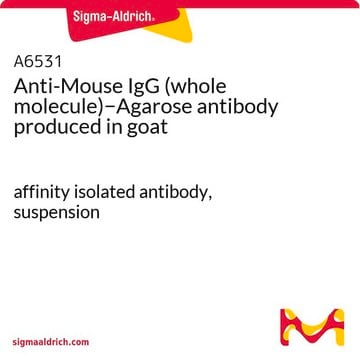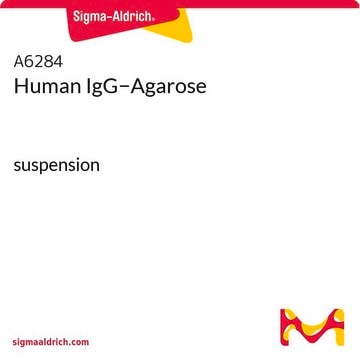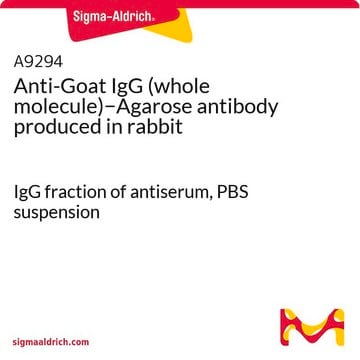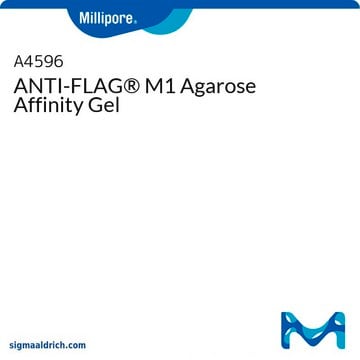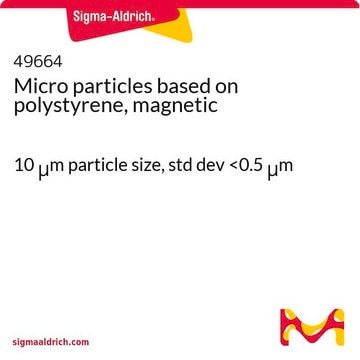A0919
Mouse IgG−Agarose
(Suspension in 0.5 M NaCl containing preservative.)
Synonyme(s) :
IgG-Agarose Beads
About This Item
Produits recommandés
Conjugué
agarose conjugate
Forme d'anticorps
purified immunoglobulin
Forme
(Suspension in 0.5 M NaCl containing preservative.)
Ampleur du marquage
1 mg per mL
Technique(s)
immunoprecipitation (IP): suitable
Matrice
Cross-linked 4% beaded agarose
Activation de la matrice
cyanogen bromide
Espaceur de matrice
1 atom
Température de stockage
2-8°C
Description générale
Application
Forme physique
Clause de non-responsabilité
Code de la classe de stockage
10 - Combustible liquids
Classe de danger pour l'eau (WGK)
WGK 3
Point d'éclair (°F)
Not applicable
Point d'éclair (°C)
Not applicable
Certificats d'analyse (COA)
Recherchez un Certificats d'analyse (COA) en saisissant le numéro de lot du produit. Les numéros de lot figurent sur l'étiquette du produit après les mots "Lot" ou "Batch".
Déjà en possession de ce produit ?
Retrouvez la documentation relative aux produits que vous avez récemment achetés dans la Bibliothèque de documents.
Les clients ont également consulté
Notre équipe de scientifiques dispose d'une expérience dans tous les secteurs de la recherche, notamment en sciences de la vie, science des matériaux, synthèse chimique, chromatographie, analyse et dans de nombreux autres domaines..
Contacter notre Service technique


